
News
By Mae Hanzlik, November 11, 2020
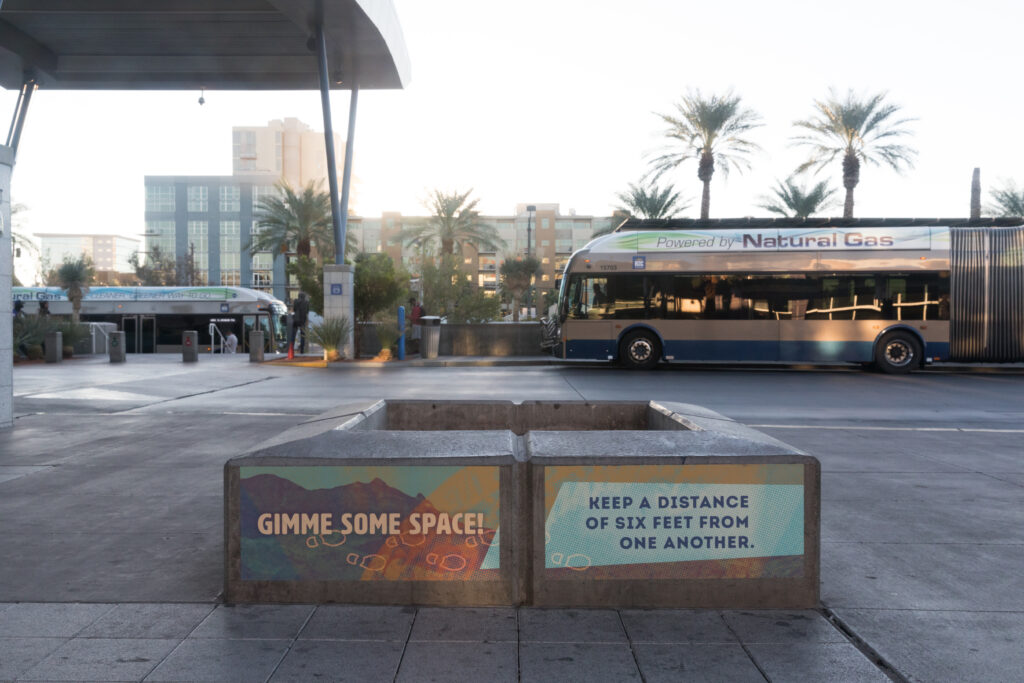
The Regional Transportation Commission of Southern Nevada worked with artist Ashley Hairston Doughty and public art consultant Mark Salinas to design signage that would effectively educate the public about social distancing and safe transit riding practices at their main transit hub, the Bonneville Transit Center.
In partnership with Forecast Public Art and with funding from the Kresge Foundation and the National Endowment for the Arts, Smart Growth America (SGA) launched the Arts & Transportation Rapid Response initiative, seeking to partner transportation agencies with artists to develop creative solutions to COVID-related transportation challenges. Read more about the project in this post, and check back all week as we publish a new story each day.
The challenge
Like most transit agencies, the Regional Transportation Commission of Southern Nevada (RTC) has faced a number of challenges due to COVID-19, but has remained committed to providing safe, excellent public transportation to its community. RTC serves the Las Vegas metro area and is responsible for connecting frontline workers, residents, and tourists to employment, essential destinations, and attractions. (While tourism is down significantly from 2019, Vegas has still welcomed millions of visitors since the beginning of the pandemic—over 1.7 million visitors in September alone.) RTC sought to work with an artist to design and implement creative signage at one of their main transit hubs, the Bonneville Transit Center, to more effectively educate the public about social distancing and safe transit riding practices.
The project
With help from Forecast Public Art, Smart Growth America selected and hired artist Ashley Hairston Doughty to design creative signage and public art consultant Mark Salinas to provide additional guidance and arts administration expertise.
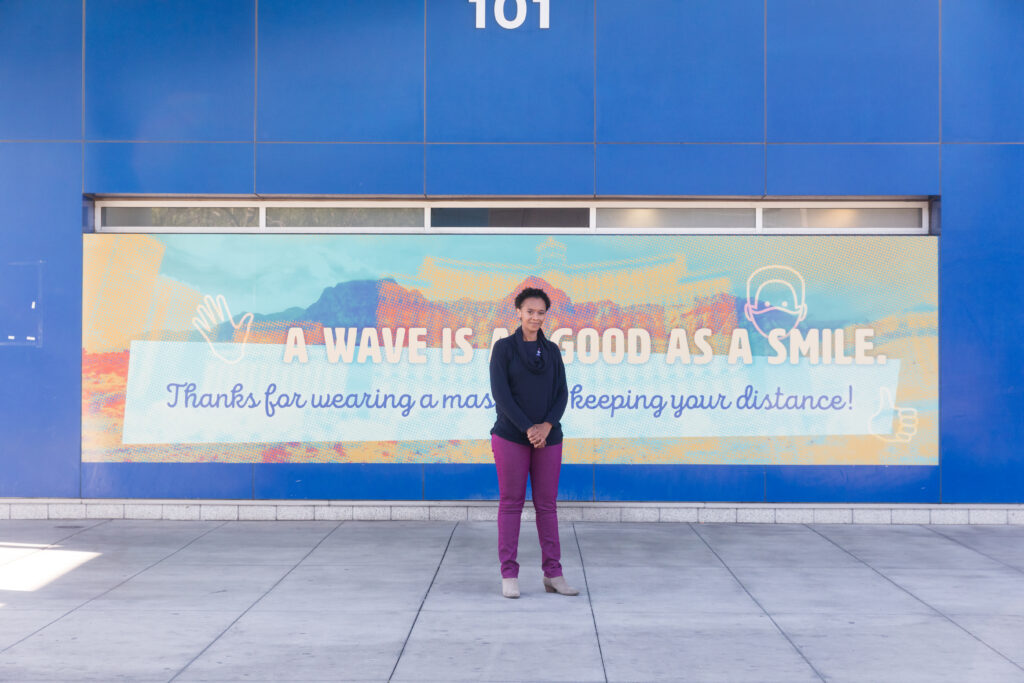
Doughty, with consultation from RTC staff and Salinas, created a cohesive concept for signage that combines images of well-known locations on the Las Vegas Strip and nearby natural landscapes, and overlaid friendly phrases encouraging people to wear masks and maintain a safe distance from others. She also conducted a series of in-person site visits with RTC staff and vinyl specialists to select the best locations to install the signage.
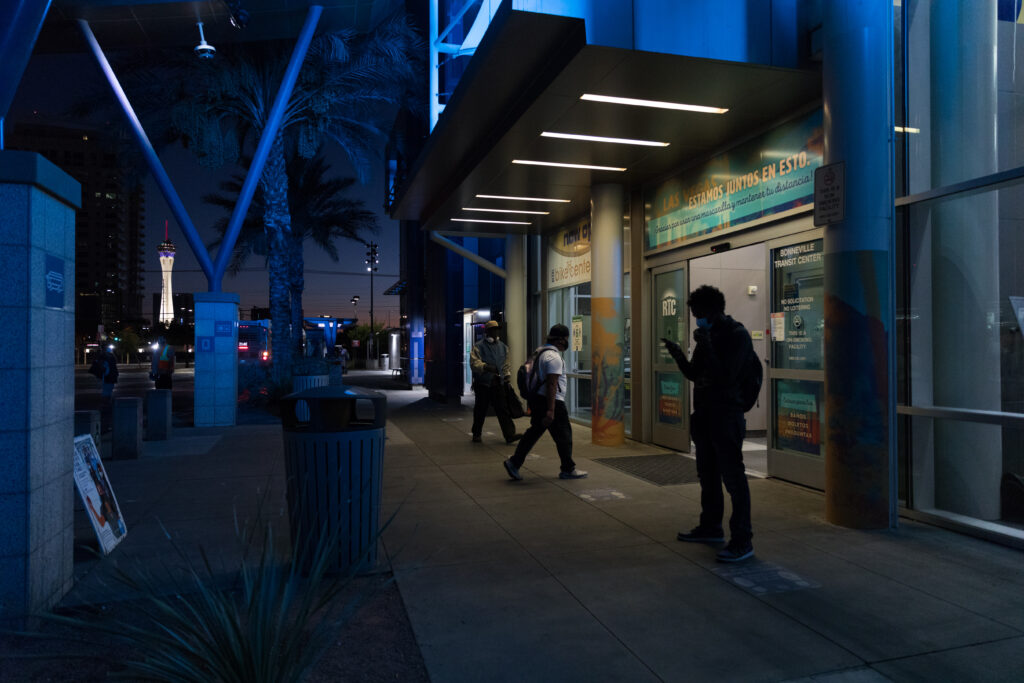
Doughty’s vision for the project is anchored in her previous work which focuses on the importance of approachable vernacular. Considering the stress, despair, and strict regulations associated with COVID, Doughty wanted to use a friendly, softer approach—like how she might speak to a friend—that would be more memorable. To ensure the language would resonate, Doughty used a combination of social media polls, public surveys, and conversations with RTC staff to develop Spanish and English messages.
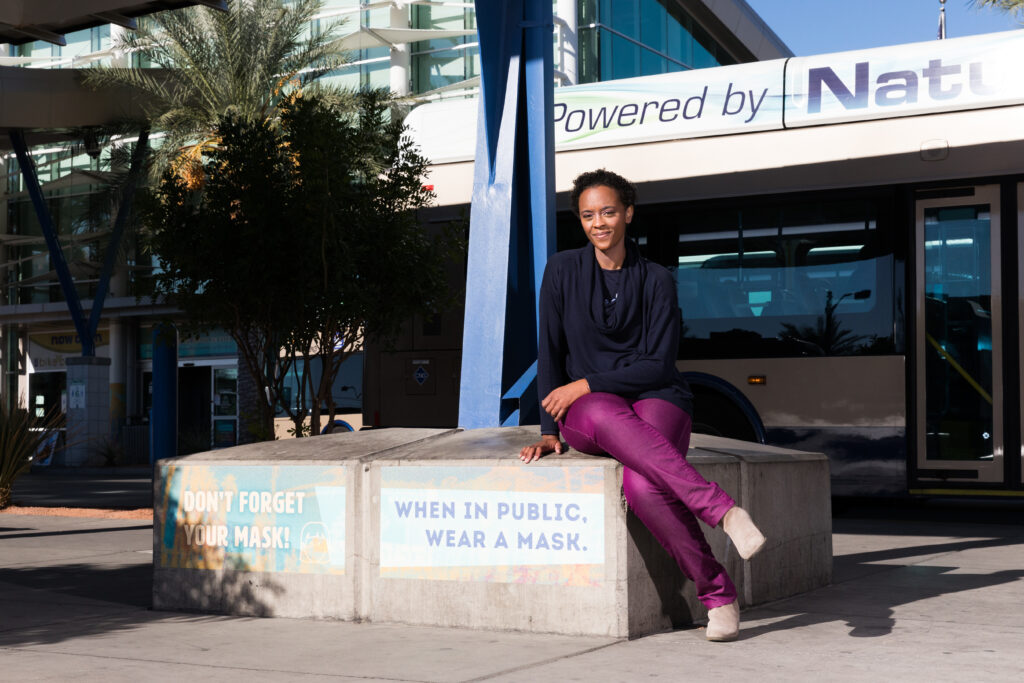
“If the statements are a bit more friendly or a bit more sarcastic, people might be more willing to listen to them and remember them.”
- Ashley Hairston Doughty, Artist
Project team
- Ashley Hairston Doughty, Artist
- Mark Salinas, Public Art Consultant
- David Swallow, Deputy Chief Executive Officer at RTC
- Brij Gulati, Director Capital Projects at RTC
- Catherine Lu, Government Affairs, Media Relations and Marketing Manager at RTC
- Wycliffe Mudambi, Manager Fixed Route Services at RTC
The results
While the signage was just installed at the end of October, the hope is that it will help encourage people at the Bonneville Transit Center to wear their masks properly (pulled up over their noses) and keep at least six feet from one another. Moreover, Doughty hopes that the signs make people realize that “by following these protocols, we are keeping each other safe.”
For transit agencies around the country seeking to launch similar messaging initiatives, consider the following reflections from RTC and Doughty’s work:
Be deliberate about where you place your signage.
Through a series of in-person site visits, accompanied by the contracted vinyl specialists, Doughty and RTC deliberately selected certain locations to place the signage. For example, they took into consideration where people arrive at the station, where they board the buses, and where they sit and relax. Doughty shared that if people are coming off the bus they’ll mostly encounter vertical elements, whereas if they are sitting and relaxing in the plaza area they’ll find more signage on the ground.
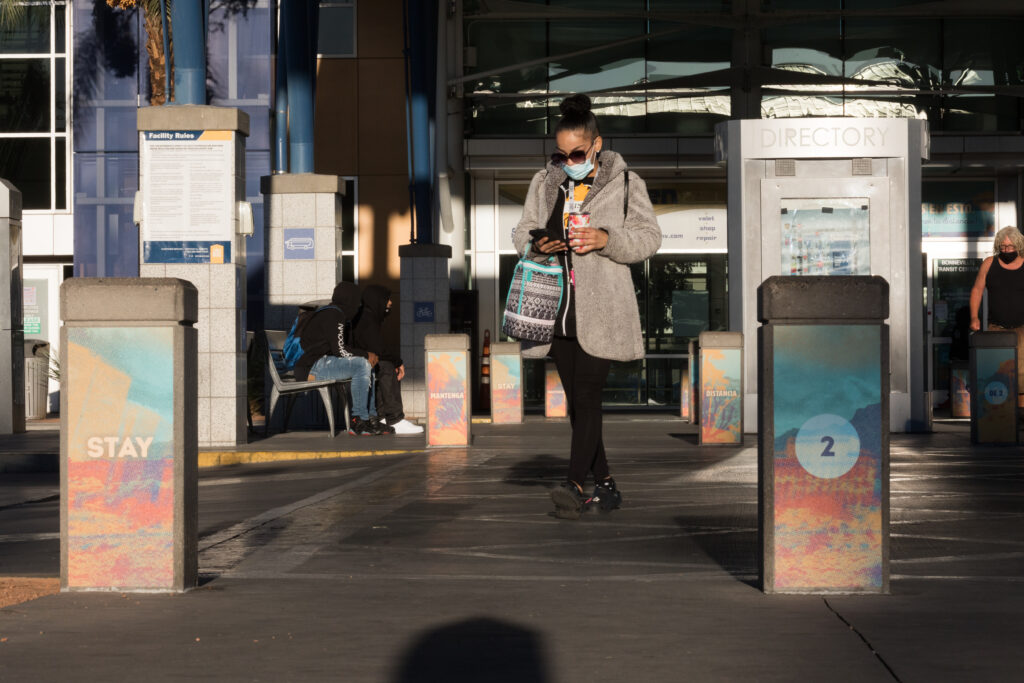
“In order to implement the project effectively, placement of the artwork is critical. We organized site visits with various staff and the artist to discuss different onsite locations and different perspectives.” - Brij Gulati, Director Capital Projects at RTC
Use friendly language to improve compliance with COVID safety protocols.
Doughty’s approach of using friendly, informal language intentionally contrasts with standard COVID protocol messaging. The goal is that by using friendly messaging—informed by people who use the Bonneville Transit Center everyday and live in Las Vegas—people find it more relatable and are more likely to comply with COVID safety guidance.
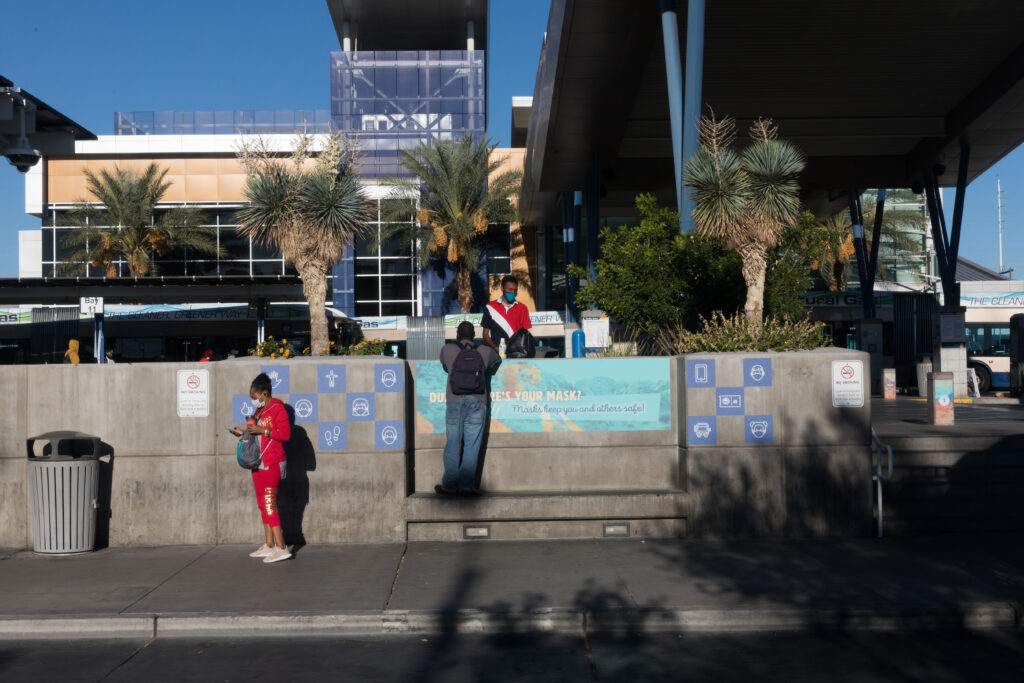
Explore material options early.
For projects with short timelines, Doughty recommends exploring project material options early in the process and seeking out price estimates before even beginning the design process. After deciding on materials and vendors, she suggests working closely with them, as their expertise can help save time in terms of sizing and location selection. This is especially important when working in an environment as harsh as Las Vegas, with its strong, color-fading sun. For this project, Doughty used vinyl for its long-term durability and ability to adhere to various surfaces including concrete and glass without creating a trip hazard or obstructing the ADA accessibility of the station.
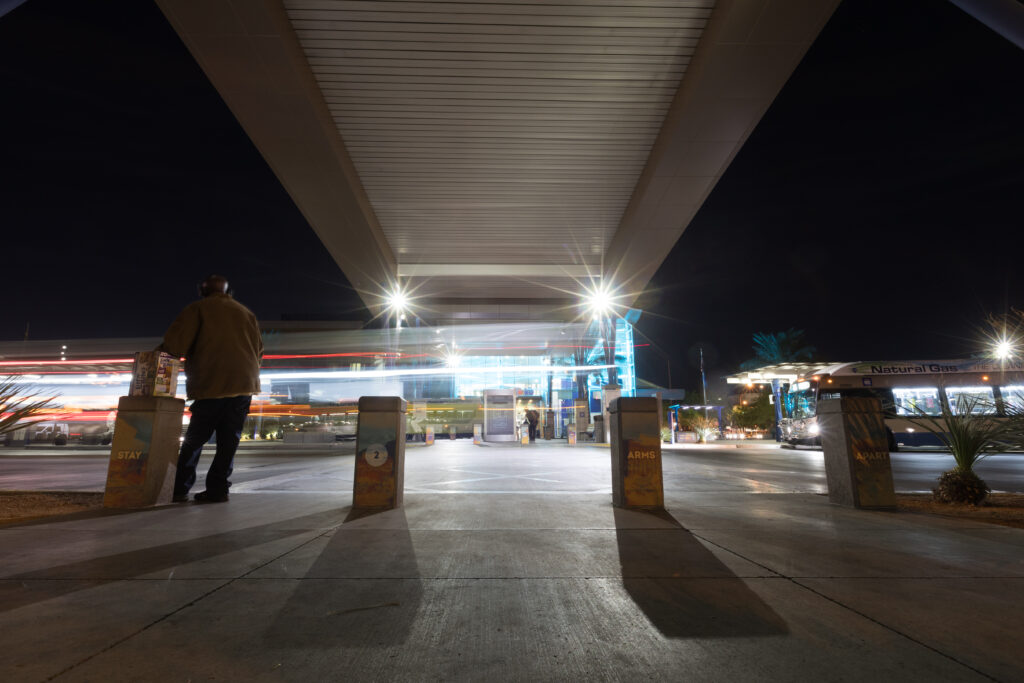
Related News

© 2025 Smart Growth America. All rights reserved
Site By3Lane Marketing








